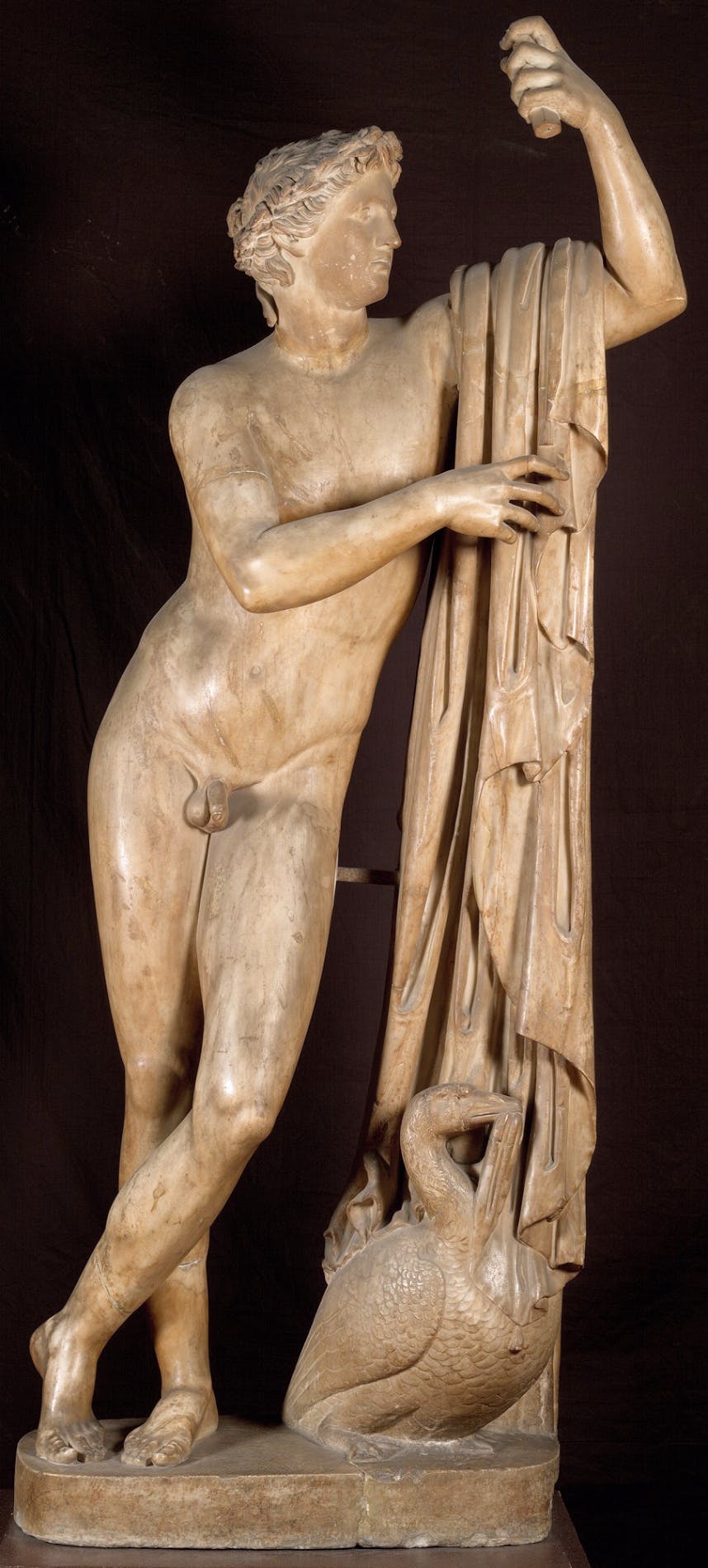Pothos
Roman art
The statue was admired and described by Winckelmann in 1755 during his visit to Rome, in the Gallery of Villa Medici on the Pincian Hill, where it was located at the time. The “father of archaeology”, similarly to other scholars of the time, identified the subject as a young Apollo, with a laurel crown, flanked by a water bird at his feet. At the suggestion of painter Raphael Mengs, in 1780, the work was transferred to Florence by Grand Duke Peter Leopold. In the following century, scholars lost interest in the statue on account of the fact that it was considered of little use to philological research, due to the numerous additions (head, arms, feet). In the early 20th century, thanks to some engraved gems, Adolf Furtwängler recognised the image of Pothos, a minor divinity in the court of Aphrodite, and embodiment of amorous yearning, in this iconography, which has been handed down to us in the form of dozens of copies. The original would seem to be the work of Skopas of Paros who, according to some ancient sources, created a sculpted group depicting Pothos, Eros, and Himeros, the personification of a Greek sanctuary. More recently, it has been suggested that the model is the work of one of his skilled pupils, who was probably active in the period 300-250 B.C.
3D model in collaboration with Indiana University.
Visit: http://www.digitalsculpture.org/florence/
